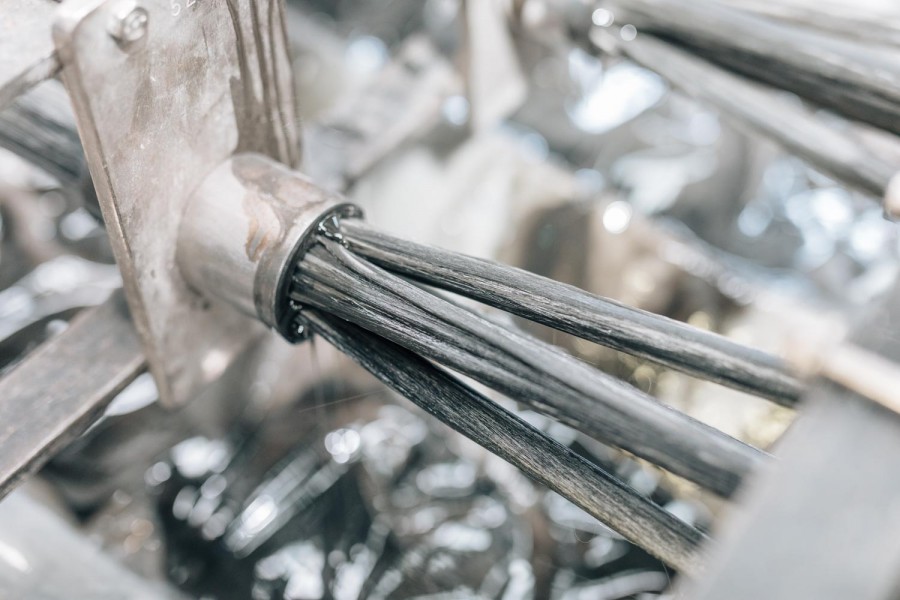What is Pultrusion? An Explanation of the Process

What is pultrusion is a question we get asked often. This article will provide a good overview of the pultrusion process and its use in manufacturing fiber-reinforced polymer (FRP) composites.
Pultrusion is an automated process for the continuous production of fiber-reinforced profiles with a constant cross-section.
There are four main types of fibers used in pultrusion:
- Glass (GFRP)
- Carbon (CFRP)
- Aramid (AFRP)
- Basalt (BFRP)
Each kind of fiber has its advantages and disadvantages. Refer to our earlier post, Composites Explained: The Four Reinforcement Fibers, if you need a quick explanation of the types of fibers used in composites.
Since construction habits are evolving and there is great demand for sustainable solutions, pultrusion is expected to grow at a faster rate than the composite industry average.
A brief history of pultrusion
There is some confusion about the origins of the pultrusion process. According to Wikipedia, “A very early pultrusion type patent was filed by J.H. Watson in 1944. This was followed by M.J. Meek’s filing of 1950. The first commercial pultrusions were provided by Glastic Company of Cleveland, Ohio, under the patent filed in 1952 by Rodger B. White. The patent issued to W. B. Goldsworthy in 1959 helped initiate the promotion and knowledge spread within the industry. W. Brandt Goldsworthy is widely regarded as the inventor of pultrusion.”
The article “History, myths and urban legends of pultrusion,” written by David E. Green and published by CompositesWorld, traces the entire history and busts some myths about pultrusion.
How does the pultrusion process work?
The pultrusion manufacturing process begins with the fibers (glass, aramid, carbon, or basalt) being pulled into an impregnation bath.
Once the raw fiber has been impregnated with liquid resin (polyester, vinyl ester, polyurethane, epoxy, hybrid resins), it is pulled further into a forming and curing die (mold), where it is heated and given its final shape.
The reinforced and cured material is continuously pulled through a flying cut-off saw, which cuts the profiles to the desired length.

What are the advantages of the pultrusion process?
- Quicker and more economical: The process is faster and more economical than ever before. This has made mass production more efficient and has brought down the manufacturing cost, making it cost-efficient for the consumer.
- Accuracy and consistency: Resin content in a profile can be accurately controlled to meet the customized properties of a profile. Consistent quality and specifications of composite profiles can be achieved with strict tolerances.
- Low energy process: The manufacturing process is a low-energy process requiring no water and minimal power.
Fiber-reinforced polymers (FRP) have proven to be a popular material of choice and are used today in various applications, from fence posts to components for Formula 1 racing cars.
View our projects for examples of composites used in a variety of applications. Each project presented its own set of challenges, making every composite solution unique.
Why is the pultrusion industry growing?
The composites industry is 3.5% of the materials market and it is growing at 5-7% CAGR. The pultrusion industry represents 3% of the composite industry. (Source: JEC Group)
Since construction habits are evolving and there is great demand for sustainable solutions, pultrusion is expected to grow at a faster rate than the composite industry average. The building and construction sector as well as the wind energy industry are important growth sectors for the pultrusion industry.
Why glass fiber-reinforced polymers (GFRP) composites?
At Pultron, we have worked with a variety of fibers (including jute) to meet the needs of our customers but have found glass fiber to be the most popular based on price and performance.
GFRP composites have a tensile strength greater than structural steel on a kg-for-kg basis. Combined with load-specific properties, it is a technically preferred material for industries including construction, recreation, and utilities.
It is 1/4 the density of steel, and it is 30% less dense than aluminum.
GFRP composites are versatile and offer many other advantages. (See Why GFRP Composites?).
As we look further at developing new technologies and improving existing ones, composites continue to play an ever-increasing role in delivering better performance solutions and increasing durability for longer life cycles.
Have questions about composites and pultrusion? Talk to one of our experts.